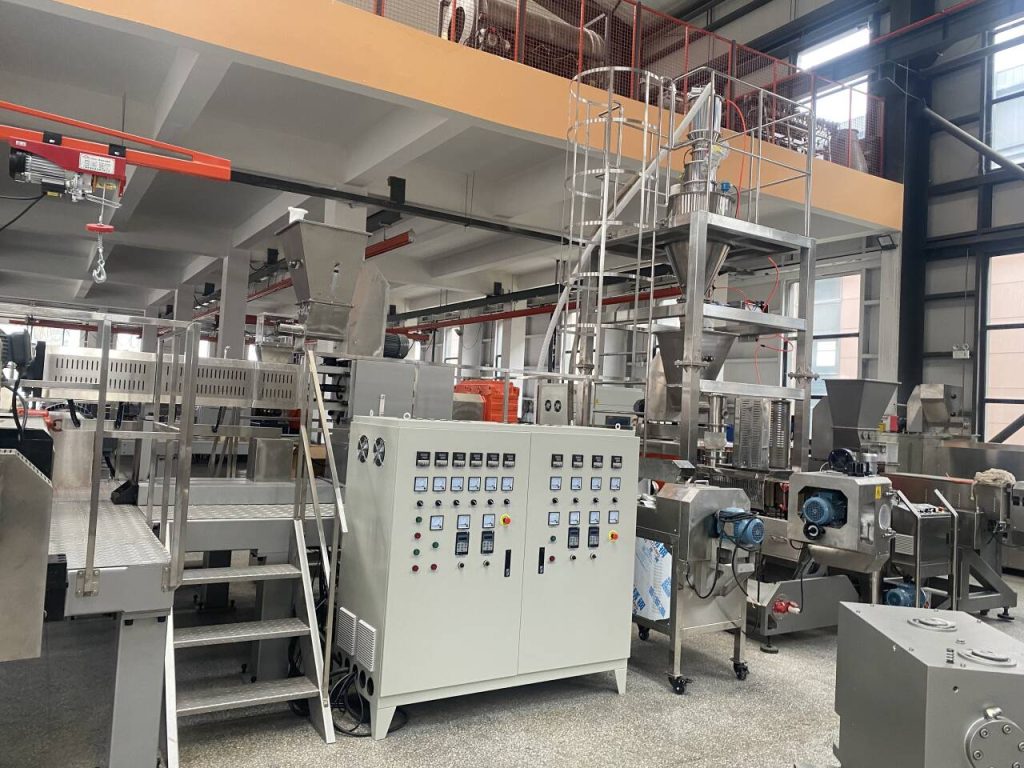## The Science & Art of Crafting Exceptional Puffed Snacks
Puffed snacks – from airy cheese balls to crispy rice cakes – are beloved for their light texture and satisfying crunch. Achieving that perfect combination isn’t magic; it’s a precise interplay of science, technology, and careful craftsmanship. Here’s how to excel in making top-quality puffed foods:
puffed snack food production line
1. **Start with Superior Raw Materials:**
* **Grain Selection:** The base grain (corn, rice, wheat, oats, etc.) is paramount. Choose varieties specifically bred for puffing, known for high starch content, low moisture, and minimal impurities. Consistency in kernel size and maturity is crucial for even processing.
* **Moisture Control:** Raw material moisture content is *critical*. Too high, and the product won’t puff properly, becoming dense or tough. Too low, and it may burn or yield insufficient expansion. Precise drying or conditioning (adding controlled moisture) before puffing is essential. Target moisture levels vary by grain but often fall between 12-15% pre-puffing.
* **Ingredient Quality:** Any added ingredients (flours, starches, proteins, flavors pre-extrusion) must be high quality, free from contaminants, and consistent batch-to-batch.
2. **Master the Puffing Process (The Heart of It):**
* **Extrusion Puffing (Most Common):**
* **Mixing & Cooking:** Ingredients are blended and fed into the extruder. Inside the barrel, screws convey the mix through progressively heated zones. High temperature, pressure, and mechanical shear cook the starch, transforming it into a molten, plasticized dough.
* **The Critical “Die”:** This molten mass is forced under immense pressure through a shaped die at the end of the extruder barrel.
* **The Flash Point:** As the hot, pressurized dough exits the die into ambient pressure, the superheated water trapped within instantly vaporizes (flashes off). This rapid expansion causes the starch matrix to “puff” dramatically, creating the characteristic light, airy structure. Precise control over temperature (typically 130-180°C at the die), pressure, screw speed, and feed rate is vital.
* **Other Methods (Gun/High-Pressure Puffing, Frying):** For grains like rice or corn kernels, puffing might involve sealing them in a high-pressure chamber (“gun”), heating them, then suddenly releasing the pressure for explosive expansion. Frying (e.g., for certain chips) uses hot oil to rapidly vaporize moisture within the product. Regardless of method, the core principle is **rapid heat transfer causing instantaneous moisture vaporization and expansion.**
3. **Optimize Post-Puffing Processing:**
* **Drying/Cooling:** Immediately after puffing, the product has high residual moisture. Gentle drying (using ovens or ambient air flow) reduces this to the target level (typically 1-3%) to ensure ultimate crispness and shelf stability. Rapid cooling sets the structure.
* **Seasoning Application:** This is where flavor magic happens. Achieving even, consistent coating is an art.
* **Oil Spraying:** A light, even coating of oil (vegetable, coconut, etc.) is often applied first. This acts as a glue for dry seasonings and enhances mouthfeel.
* **Seasoning Adhesion:** Dry powder seasonings (cheese, spices, savory blends) are then applied in rotating tumblers or seasoning drums. The key is achieving uniform coverage without clumping or excessive breakage. Spray systems for liquid seasonings (like soy sauce or honey) require precise control to avoid sogginess.
* **Handling with Care:** Puffed products are inherently fragile. Conveyor systems, transfer points, and packaging equipment must be designed to minimize impact and abrasion that causes fines (small broken pieces).
4. **Prioritize Flavor & Texture Perfection:**
* **Flavor Development:** Seasoning blends must be robust, well-balanced, and specifically designed to adhere well and survive the eating experience. Masking any potential “raw” grain or process off-notes is important. Natural flavors and clean labels are increasingly demanded.
* **Texture is King:** The hallmark is **lightness and crispness**. Measure expansion ratio (volume increase after puffing). Target a low product density. The bite should offer an initial crisp, audible snap followed by rapid meltdown in the mouth, without gumminess, hardness, or excessive tooth-packing. Moisture content and fat level are key texture drivers.
5. **Ensure Quality & Shelf Life:**
* **Rigorous QC:** Implement checks throughout: raw material specs, in-process parameters (moisture, temp, pressure), final product attributes (size, shape, color, moisture, texture, flavor, seasoning level, expansion), and packaging integrity.
* **Barrier Packaging:** Puffed snacks are hygroscopic (absorb moisture) and susceptible to oxidation (rancidity). Use high-barrier packaging materials (often metallized films or laminates) with excellent seals. Nitrogen flushing is common to displace oxygen and prevent staleness and rancidity, maintaining that fresh-off-the-line crunch.
**Key Considerations for Success:**
* **Consistency:** Every step must be tightly controlled and repeatable batch after batch. Automation is key in large-scale production.
* **Hygiene:** Maintain impeccable sanitation standards throughout the process to prevent microbial contamination.
* **Innovation:** Continuously explore new grains (ancient grains, legumes), flavor profiles (global, spicy, sweet/savory), textures (multi-grain, layered), shapes, and healthier formulations (reduced fat/sodium, higher protein/fiber).
**Conclusion:**
Making exceptional puffed snacks is a sophisticated blend of selecting the right ingredients, precisely controlling the high-energy puffing process (especially extrusion), expertly applying seasonings, and protecting the delicate texture with advanced packaging. By mastering the science of starch transformation and moisture dynamics, and paying meticulous attention to detail at every stage, producers can consistently deliver the light, crispy, flavorful snacks that consumers crave. It’s a process where engineering precision meets culinary creativity.




